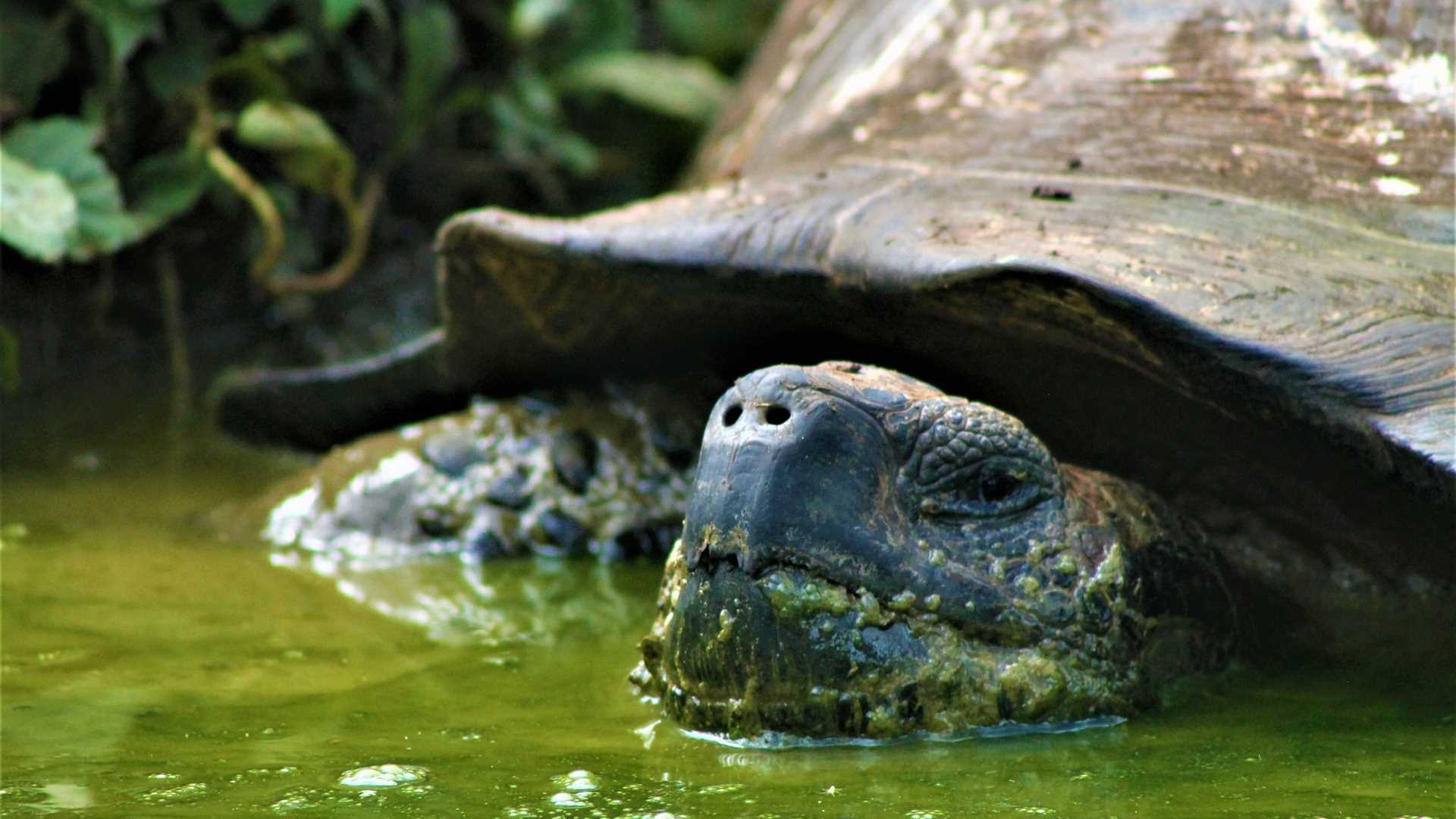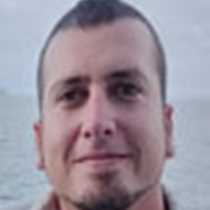Our day started early this morning on the north side of Santa Cruz Island, the second largest in the Galapagos. With an area of almost 1,000 square kilometers, Santa Cruz is one of four inhabited islands in the archipelago, and it hosts the largest human population, an estimated 25,000 people.
After National Geographic Endeavour II guests woke up and enjoyed an energizing breakfast, we were ready to spend the day exploring the island. We landed on the dock of Itabaca Channel and boarded buses to start the ride to El Manzanillo Ranch. The buses took us through the island. As we traveled, it was amazing to see the landscape shift dramatically. We started in a coastal zone with local vegetation like the gigantic prickly pear cactus before moving into a unique cloud forest. Thanks to the forest’s high elevation, we could enjoy Scalesias in this magical place.
As we drove past cattle ranches and farms, guests observed one of the most iconic species of the Galapagos Islands in the wild: Geochelone porteri, Santa Cruz’s endemic species of giant tortoise. Soon after, we reached a private property owned by the local galapagueños family: El Manzanillo Reserve. In this place, guests can watch the giants resting peacefully and without fear. We disembarked from the buses to explore. We learned about one of the most successful and iconic populations of these magnificent reptiles, right in their natural habitat.
We discussed the giant tortoise’s role as the mega herbivore in the archipelago; these creatures are the major landscapers of the terrestrial ecosystem, shaping the vegetative architecture. We also learned about different morphotypes of the giant tortoises. We enjoyed observing the dome-shaped ones, which also happen to be one of the largest of all the species. It was quite delightful to walk among guava trees, finches, and the beautiful tortoises. These gentle giants walk slowly to find a place to eat and rest for the day. We watched them feeding, mating, and resting. Everybody had the chance to observe them and learn about their natural history.
Later in the day, we arrived at one of the most beautiful beaches in the Galapagos. “Las Bachas” is named after a mispronunciation of The Barges, for on this beach, two large barges were abandoned during the U.S. military’s occupation of Baltra Island. We enjoyed a stunning beach with soft white sands and turquoise waters. Some guests had a pleasurable time walking along this sandy beach while others went for a swim in the light blue waters, a beautiful and relaxing site to bathe in the ocean at sunset. It was another special day in paradise. We made many memories for our guests to take home! Today’s visit was outstanding!







